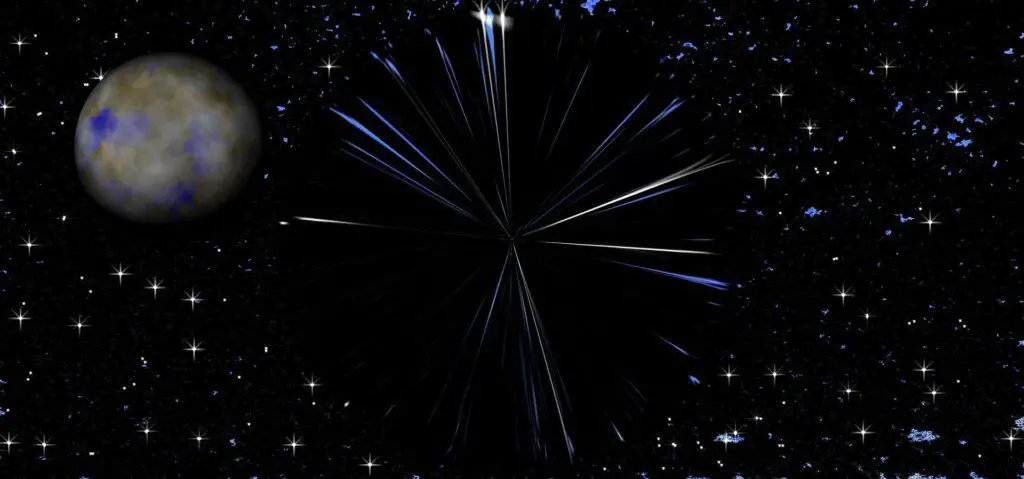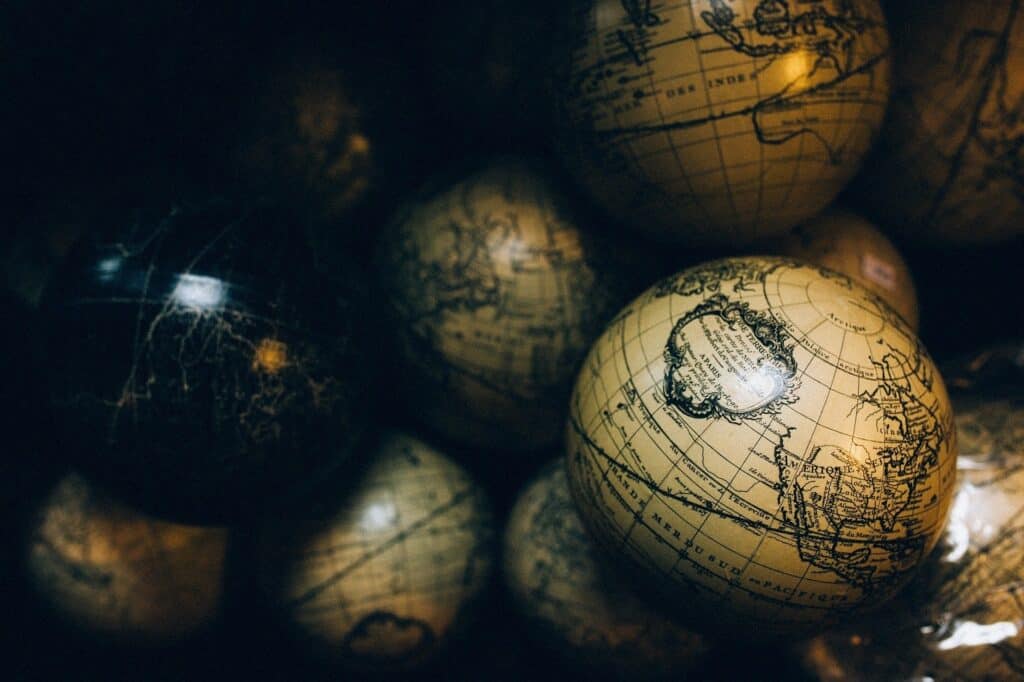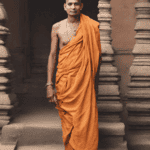The article is more bound to the meaning of the cosmology and its related terminologies. It influences the etymology underplayed in the cosmic evolution. Of course! The article delivers more information about yugas, lokas, Vedas encrypted with the evolution of the universe.

Hindu Cosmology Introduction
The term denotes the description of origin, evolution, and development of the universe along with its matter comprised. The cycle of existence of the universe varies respect to the time elapses of the Yuga. The time-lapse of the universe is estimated at almost 4 billion years and based on that four yugas determined in the Hindu cosmology.
The cosmology is more related to astrology and the Big Bang theory is being in practice since the modern age of evolution. Before the Big Bang theory, Vedic texts forwarded the evolution of the universe. In that, the creation of the universe believed held at the Kalpa perhaps destroyed by Pralaya. Hindu religion believes Brahman the god of creation performs the creation of the universe in Kalpa day of Brahma whereas the Pralaya was termed as the night time of Brahma.
Yugas
Definition
Yuga is defined as the extended time or the number of years that are related to the past, present, and future. The sanadhan dharma aka Hindu religion uses the term Yuga to denote one of the four dharmic ages or the Chatur ages named Sathya Yuga, Treta Yuga, Dwapara Yug, and Kali yug.
Descending from the Sathya yug, the essence of humanity and virtuous decreases perhaps increases with the occurrence of sin, crime, and passion toward anything else. A deep discussion of the four ages will explain enough each Yuga.
1. Sathya Yuga
The era is denoted as the ‘’Golden age of Hinduism’’ and it was the same Yuga known for the existence of truth and wisdom. The Yuga is also known as Krita Yuga. The characteristics of Sathya Yuga include people following truth and righteousness. The accountability and wisdom of people are unparalleled hence long-lived without diseases. The Yuga ensures supreme blessedness to all and people followed one religion and free from racial discrimination. The earth showers its blessing by all means hence no agriculture or mining is required for enriching resources.
More accumulated in the period of Sathya Yuga that is not explained by words. Overall, Yuga is the period of divinity and wisdom. People stature is about 33 ft heights also lead life span of 1, 00,000 years.
2. Treta Yuga
The named Treta Yuga was derived from Sanskrit that means the ‘’collection of three arousing things’’. The Yuga falls second of the four ages. It is the same Yuga in which is seen two incarnations of Lord Vishnu Parasuram and Rama. The Yuga lasted about 3600 divine years that is 1296000 years of humanity years. The Treta Yuga shows that the morality symbolized by the bull of dharma stood in three legs. The legs count downwards as the Yuga forwarding.
3. Characteristics of Treta Yuga
People of the age thrive for their desire and put forth active work out to meet their needs. They become capitalistic and developed a reduced inclination toward devotional thoughts. Kings and sages were responsive physically to meet their needs that lead to provoke wars everywhere. Other words would explain that there is increased climatic change due to the changes with a human being.
Agriculture and mining came into existence with flying colors and people start to adhere to the necessity of living. This enhanced them to acquire knowledge of nature and the universe.
4. Dvapara Yuga
This Yuga stands third in the order of four ages and is the Sanskrit word that means ‘’two ahead’’. The Yuga follows Treta Yuga and followed by Kali Yuga and Hindu texts quote that Dvapara Yuga extended about 864000 years of human years and 2400 divine years. This is the same era Lord Vishnu incarnated as Krishna, eighth avatar. The Yuga ended soon after Lord Krishna returned his eternal abode.
Characteristics: People of Dvapara Yuga find racial discrimination and classified people based on birth and occupation their bear. According to that, four classes of people were formed in the Dvapara Yuga and they are criticized or credited based on their race belonging to. People were so courageous and pleasurable seeking at the same time.
5. Kali Yuga
The last stage of four ages mentioned in the Hindu scriptures is the Kali Yuga. The Yuga is named after the demon Kali and estimated began 5,120 years ago. People of Kali Yuga are so contented with distortion, very materialistic, and equipped toward undesirable pleasure and living being.
Characteristics: Kali Yuga falls lasts of the order that is filled with an immoral attitude of people. According to Hindu scriptures, soon after the demise of Lord Krishna Dvapara Yuga ends up and the beginning of Kali Yuga attains. Sacred texts of Hinduism quote that the Kali Yuga starts in 3102 BCE and is aged 426,879 years. The same sources highlight that Kali Yuga lasts up to 428, 899 years.

Lokas
According to Hindu cosmology the universe believed comprises of 14 lokas that are grouped as 7 upper planes and 7 lower planes. Each lokas do possess a specified name and a total of 14 lokas together form the universe. Hindu scriptures narrate the names of each lokas based on that the seven higher ones as Vyahrti while the lower ones are mentioned as Patalas.
Seven higher planes are stated as:

- Bhu
- Bhuvas
- Svar
- Jana
- Maha
- Tapas
- Satya
While those seven lower planes include:
- Atala
- Vitala
- Sudala
- Rasatala
- Talatala
- Mahatala
- Patala
Hindu myth follows and believes that 14 lokas are stated as heaven and hell that includes the living area or earthy.
Vedas
The etymology of the term Veda is boundless and can be detailed infinite. The Sanskrit term Veda means the ‘’knowledge’’ and the root of the word comes from the noun ‘’vid’’- which means ‘’to know’’. Similar other synonyms are given to the terminology but the most common meaning is the knowledge. The Vedas are grouped into four numbers named Rig, Sama, Yajur, and Adharvana Vedas respectively. Each group of Vedas is subdivided into further more divisions instance the Samhitas, Aranyakas, Upanishads, and the Brahmanas. Hindu texts aged millions of years ago is the Veda.

Modern science findings
Hindu cosmology is very oldest and being the predecessor to either of modern scientific findings. Various theories and evaluations made estimating the origin of the universe, ancient scriptures stand ahead as reference theory.
Below are few general questions regarding the cosmology:
How many dimensions are there according to Vedas?
The universe possesses various dimensions based on Vedic scriptures according to that the space within the universe is multi-dimensional. Modern thesis narrates that Universe is three dimensional; space, width, and time. Hindu Vedic texts deal with eight matters influencing the dimensions which are further sub-classified into 64 dimensions.
How many universes are there according to Hinduism?
Hinduism preaches that the existence of the universe is cyclic deeper in the sense the creation and destruction of the universe happen cyclically. Hinduism believes one universe being created and destructed at each stage mentioned as Yuga.
What are 14 lokas in Hindu mythology?
Hindu myths highlight the existence of 14 lokas together comprises of the universe. The seven upper planes and seven lower planes are together known as 14 lokas. Starting from Sathya loka the higher seven descends ending with the patala loka.
- Bhu
- Bhuvas
- Svar
- Jana
- Maha
- Tapas
- Satya
- Atala
- Vitala
- Sudala
- Rasatala
- Talatala
- Mahatala
- Patala
Who was the first woman on earth in Hinduism?
In Hindu mythology, Brahma, the god of creation had created the first female Shatrupa. She was the one that can take a hundred beautiful forms. She is also known by other names satarupa, Brahmi, and Sandhya. Later Shatrupa married Manu and had five children, the legend goes on.
Who was the first man on earth in Hinduism?
Hindu cosmology narrates Sage Manu to be the first man on earth. He married the first woman Shatrupa, created by Brahman. They married and gave birth to five children on earth.
How many years is 1 Yuga?
Hindu cosmic definition explains that 1 Yuga is the completion of the revolution of the earth’s axis. It is exactly 25,920 years earth takes to complete its cycle of axial revolution. Based on the theory, 1 Yuga is comprised of 25, 920 years. Besides, the whole solar system revolves around the galactic center in its axis within the same number of years.
What is Trilok?
Trilok is the Sanskrit word that means ‘’three lokas’’. The universe is divided into three divisions as heaven, earth, and atmosphere according to Hindu cosmology. Each case is further classified into seven regions, again.
How will Kali Yug end?
Kali Yuga is the final stage of the four ages. As per Hindu texts, Kali Yuga has begun 5102 years ago. As the Dvapara Yuga came to end, the era of Kali begins and believed to be existed 428, 899 years. Kali Yuga will come to end when reached the destined years.

